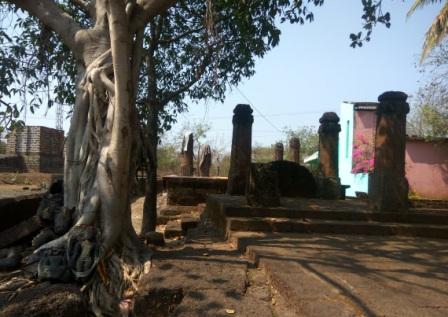Khaira: Kupari area under Khaira block in Balasore has a treasure trove of ancient Buddhist relics. A Buddha stupa is at Shamuka village, which is 30 km from Soro and 20 km from Ranital. Locals say, many legends of past centuries lie hidden in the Buddha stupa.
Sculptural ruins of Buddhist culture have been lying scattered in Kupari village. One of the major attractions is a Boudha mandap or Mandira as it is called by local people.
Near the stupa is a broken stone image of Lord Budhha in yogic posture. However, there is hardly any research on the antiquity of the culture. Some researchers say, the Buddhist culture here belongs to 9th century.
It is believed that monks of Mahyana sect of the Buddhism had visited Kupari area centuries ago when stupas and stone statutes of Lord Buddha had been built.
These sculptural remains are believed to be of Bhoumkar’s time. They bear much similarity with those found at Sishupalgarh, some historians say.
In 1869, the then collector of Balasore John Beams used to visit Kupari area and proved the place as a hub of Buddhist culture after an intensive research.
In an article published in a journal of West Bengal’s Asiatic Society, Beams had claimed that all those scattered sculptural ruins exclusively belonged to Buddhism. Besides, he had sent samples of the sculpture to the Asiatic Society.
In 1934, there was research on the Kupari site and its cultural remains.
After the stupa was handed over to the tourism department, restoration works have been done. The archeology department took about a year to restore the broken stupa by spending about Rs 1 crore. The restoration work was done particularly by Jyotiprakash Panigrahy after he was made tourism and culture minister.
Significantly, after restoration work, tourists have started making their footfalls in the village to see the ancient Buddhist culture.
Sarat Kumar Biswal, president of the Baristha Nagrika Manch and villager Biswanrajan Mohapatra observed that after restoration of the broken stupa, tourists were gradually coming here.
PNN






